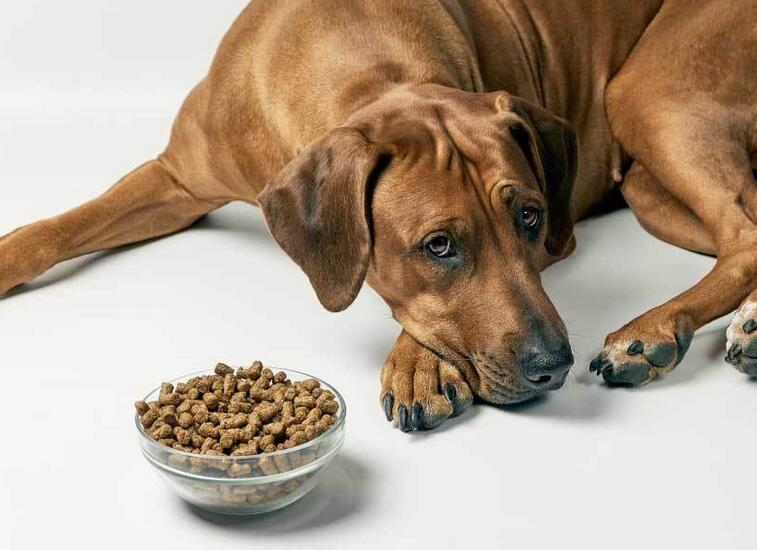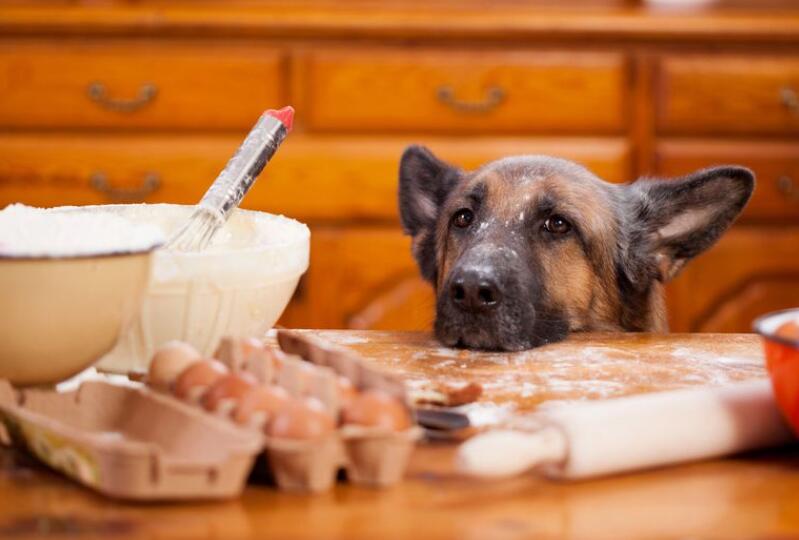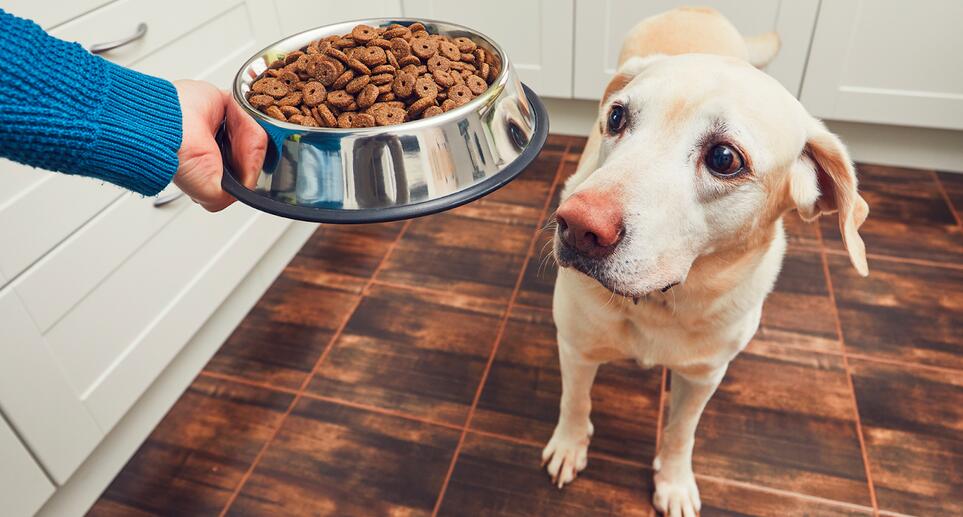Having a sick dog at home can be worrying. Besides giving medications and providing comfort, one of our top concerns is usually getting our pooch to eat something – anything! Loss of appetite is one of the most common symptoms when a canine companion isn’t feeling well.
While eating less is normal at first, dogs need adequate nutrition to keep up strength and energy levels. Getting a sick dog to consume calories and nutrients aids the immune system, prevents muscle loss, speeds healing, and supports recovery. This article will cover common reasons for appetite decline in sick dogs, tips for tempting them to eat, and when to make an urgent call to your vet.
Why Do Sick Dogs Often Lose Their Appetite?
There are a number of reasons why canine patients typically lose interest in food when ill or not feeling well. Understanding the cause can help you address appetite issues appropriately:
Illness or Infection
One of the most obvious reasons a sick dog may stop eating is simple – they don’t feel good! Any type of illness from a respiratory infection, to upset stomach, to urinary tract infection can reduce appetite. Chills, fever, nausea, diarrhea, vomiting, body aches, and general malaise all accompany many common dog illnesses. If your pooch feels crummy, they likely don’t want to eat.
Recovery from Surgery
Going through surgery and anesthesia is taxing on the body. The combination of anesthesia side effects, post-op pain and discomfort, reduced mobility, and medication side effects often depress appetite. Dogs may be too nauseous and tired to want to eat or make the effort to chew and swallow during surgical recovery.
Stress or Anxiety
Dogs experiencing stressful situations like separation anxiety when home alone, fear of loud noises like thunder or fireworks, travel anxiety, or general anxiousness can go off their food. The stress hormone cortisol released in response to triggers causes stomach upset, nausea, and loss of appetite. Highly anxious dogs often won’t eat when worked up.
Depression
Depression in dogs is a very real thing. Triggers like the loss or passing of a companion pet, owner absence through deployment or moving, rehoming, or addition of a new baby can cause grieving and depressive symptoms in dogs. When depressed, dogs lose interest and motivation for all normal activities – including eating and drinking.
Mouth Pain
Sometimes the issue is oral discomfort. Dogs with dental disease like infected teeth, mouth sores, gum disease, or growths like oral tumors often associate the pain with eating. The discomfort makes chewing and swallowing food unpleasant, decreasing appetite. Dental pain is unfortunately common in canines, especially seniors.
Side Effects of Medications
Some prescription medications have appetite loss or nausea as potential side effects. For example, chemotherapy drugs, antibiotics, anti-inflammatories, and steroids can negatively impact appetite, digestion, and cause vomiting or diarrhea in some dogs. Always carefully read medication labels and guidelines.
Aging
As dogs enter their golden years, they experience a slowed metabolism along with a decreased sense of smell and taste that can lead to appetite decline. Many elderly dogs also have dental disease that makes chewing painful. Monitoring weight and providing softer foods are key for senior pups.


Foods That Can Stimulate Appetite
When trying to tempt a sick dog to eat, here are some nutritious foods known to stimulate appetite:
- Wet or canned dog food – The smell and texture make canned food more enticing. Look for energy-dense, high-calorie formulas.
- Bone broth – The rich smell and savory flavor often appeal to dogs. Choose low-sodium varieties.
- Pumpkin – Most dogs enjoy the sweet flavor. Make sure pumpkin is plain, not pumpkin pie mix.
- Baby food – High in calories and easy to swallow. Stick to meat-based varieties, not fruit.
- Shredded boiled chicken – This mild bland food is gentle on upset stomachs. Remove bones and skin first.
- Scrambled or boiled eggs – Cooked eggs provide protein and are easy to digest.
- Oatmeal – Oatmeal is soothing and simple for dogs to eat. Cook with water and skip sugar.
- Plain yogurt – Probiotics support gut health. Choose unflavored non-fat yogurt.
- Sweet potato – Steamed, mashed sweet potato is nutritious and appealing.
- Fish – Flaky cooked fish like cod, tilapia or salmon provides omega-3s.
Foods to Avoid for Sick Dogs
When your dog is ill, it’s important to avoid foods that could irritate their stomach or have harmful effects. Here are some foods to steer clear of when your dog is sick:
- Xylitol – This sugar substitute can cause dangerous blood sugar crashes in dogs. Check labels.
- Alcohol – Can cause serious intoxication. Never give dogs alcohol.
- Caffeine – Can overstimulate dogs, causing vomiting, diarrhea, and abnormal heart rhythms.
- Chocolate – Toxic to dogs due to theobromine and caffeine.
- Grapes/Raisins – Can cause kidney failure in dogs. Never feed grapes.
- Macadamia nuts – Contain unknown toxins dangerous to dogs.
- Onions/garlic – Can damage red blood cells and cause anemia.
- Fatty foods – Can cause pancreatitis in dogs. Stick to low-fat.
- Sugar and sweets – Can disrupt gut bacteria. Also avoid artificial sweeteners like xylitol.
- Raw dough – Risk of dangerous E. coli and Salmonella.
- Bones – Can splinter and cause obstructions or lacerations.
It’s also critical to avoid giving human medications like Tylenol, Advil, Tums, and Dramamine, which are toxic for dogs. Always consult your vet before giving any people medications or supplements.
Importance of Hydration for Sick Dogs
Ensuring sick dogs stay well-hydrated is just as important as nutrition. Dehydration is a serious risk for dogs refusing food and water.
Signs of dehydration include:
- Dry, sticky gums
- Lethargy, weakness
- Skin tenting – when pinched, the skin is slow to flatten out again
- Sunken eyes
- Rapid or irregular heartbeat
To encourage hydration:
- Add water, bone broth or canned food gravy to their meals
- Try different water bowls and placement locations
- Offer ice cubes or frozen broths for licking
- Use a syringe or turkey baster to give water slowly if refusing to drink
If symptoms of dehydration persist more than 24 hours, urgently contact your vet. They can provide subcutaneous fluids to treat dehydration. Ignoring dehydration can have life-threatening consequences.
When to Stop Feeding a Sick Dog
In most cases of illness, it’s important to continue feeding your dog to prevent malnutrition and help them recover. However, in certain situations you may need to withhold food temporarily:
- If vomiting – Do not feed for 6-12 hours after the last episode of vomiting. Food can exacerbate vomiting.
- Severe diarrhea – Withhold food for 12-24 hours until diarrhea resolves. Eating can worsen diarrhea.
- Abdominal surgery – Follow your vet’s post-op guidelines on when to start feeding again slowly and in small meals.
- Bloat risk – Dogs prone to bloat should not exercise or eat large meals before or after vomiting.
- Per vet instructions – Your vet may recommend not feeding for a period of time depending on the illness.
It’s essential to stay in contact with your vet and follow their recommendations.
When to Contact the Vet if Your Dog Won’t Eat
While it’s normal for your dog’s appetite to decrease slightly when they don’t feel well, contact your veterinarian promptly if your dog refuses food or shows a significant appetite change for more than 2 days. Also call your vet right away if any of these symptoms accompany a loss of appetite:
- Vomiting
- Diarrhea
- Lethargy or fatigue
- Weight loss
- Excessive coughing or labored breathing
- Wheezing or gagging
- Signs of pain or discomfort
These symptoms combined with appetite decline warrant a trip to the vet, as there are many medical reasons that could explain why your pup isn’t eating, including:
- Illness like kidney disease, cancer, hepatitis
- Infections like parvo virus and leptospirosis
- Dental disease, mouth sores, or oral tumors
- Gastrointestinal obstruction or digestive issues
- Pain from trauma, injury or arthritis
- Side effects of medication
- Organ dysfunction
Conclusion
Appetite changes and disinterest in food are common symptoms when a dog isn’t feeling well. While eating less is normal at first, be sure to tempt your sick dog to eat with aromatic foods and favorite treats. Call your vet promptly if appetite loss persists or is accompanied by other symptoms. With patience and the right care, your furry friend will be back to their normal, hungry selves in no time.



